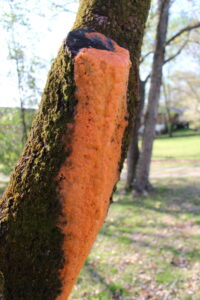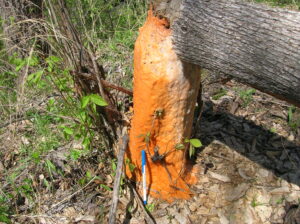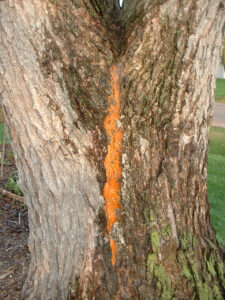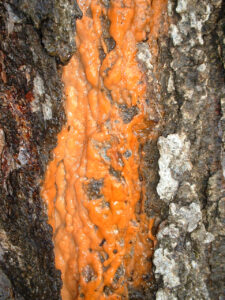If you have ever seen gooey neon orange branches on trees and shrubs you may have been observing a phenomenon commonly known by the very scientific name of ‘orange goo’. Appearing in cool, wet weather during spring sap flow, the goo is caused by fungi, bacteria and yeast colonizing tree sap, especially where an injury causes excessive sap flow.
- Orange goo on cut dogwood branch (photo by Alan Windham)
- Orange goo on a tree felled by a beaver (photo source unknown)
Orange goo (or slime if you prefer) has been reported on a wide range of trees and shrubs from across the US and Europe. Those who have studied the phenomenon have generally reported the main cause of the orange color is a yeast in the genus Cryptococcus, which accumulates carotene, the same pigment found in carrots (1). Others have reported a number of different Cryptococcus spp. in spring sap-flows as well as several Fusarium species (2) and Fusicolla merismoides (3). The composition of the fungi and yeasts present may differ from location to location and may change over time as temperatures increase.
- Orange goo on elm (photo source unknown)
- Close view of orange goo on tree trunk (photo source unknown)
Regardless of the cause, this colorful display causes no harm to the tree and usually dries up in warmer dry weather. Spring sap flows produce copious sap, in contrast to the more familiar slime flux in trees, which is the result of a slower, chronic production of exudates and may continue throughout the growing season. These chronic sap flows associated with slime flux in trees are colonized by a different set of microorganisms, and rarely have the same brilliant colors.



